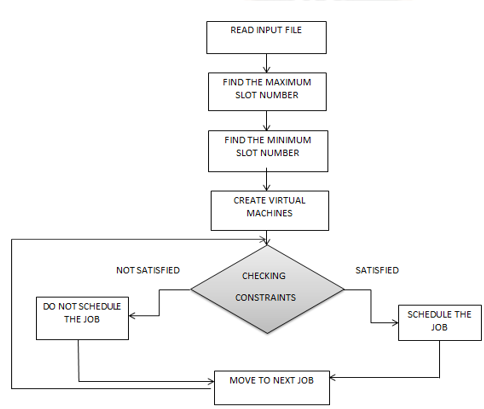Client Classification and Dynamic Pricing of Resources in Cloud using Cloud Simulator
Main Article Content
Abstract
In cloud computing scenarios, the resources like hardware or software or applications can be accessed whenever a client needs. The client needs to get a subscription to avail service. The usages are monitored by service provider for each client over a network. When more number of client issues a request in cloud, scheduling the resources and pricing of taken resources from the cloud have a huge difference on the incomes. The job request from the user is scheduled in cloud is done, based on the need of the client (i.e) client classification algorithm and based on the demand pricing is fixed (i.e) dynamic pricing scheme. These algorithms solves income optimization problem by allocating resources under a given price and pricing of the resources are based on the allocation. The experiments were proposed with cloud simulation. Cloud simulations results are measured with the first come first serve, client classification and dynamic pricing model. The proposed algorithm shows the better resource allocation based on the pricing method.
Article Details
References
Mell P and Grance T , “The NIST definition of cloud computing,” Tech. Rep., National Institute of Standards and Technology, Gaithersburg, MD, USA, 2011, Technical report.
A. Arunarani, D. Manjula, and V. Sugumaran, “Task scheduling techniques in cloud computing: a literature survey,” Future Generation Computer Systems, vol. 91, pp. 407– 415, 2019.
Babur Hayat Malik, Mehwashma Amir, Bilal Mazhar, Rabiya Jalil on “Comparison of Task Scheduling Algorithms in Cloud Environment” at Internal Journal of Advanced Computer Science and Applications, Vol.9, No.5, 2019.
Gawali,M.B.,Shinde, S.K. Task Scheduling and resource allocation in cloud computing using a heuristic approach.J Cloud Comp 7,4 (2018).
Soumya Ranjan Jena, Swagatika Tripathy, Tarini P. Panigrahy, Mamata Rath on “Comparison of Different Task Scheduling Algorithms in Cloud Computing Environment Using Cloud Reports “ at Smart Intelligent Computing and Applications pp 33-42, 2019.
Athokpam Bikramjit Singh,Sathyendra Bhat J,Ragesh Raju1, Rio D’Souza on "A Comparative study of various scheduling algorithms in cloud computing" at American Journal of Intelligent Systems, Vol.7, No.3 2017.
. Hong Sun,Shi-ping-chin,Chen-jin,Kai Guo,”Research and simulation of Task Scheduling algorithm in cloud computing”,at TELKOMNIKA Indonesian Journal of Electrical Engineering,November 2013.
.Z. Jia, J. Yan, J. Y. T. Leung, K. Li, and H. Chen, “Ant colony optimization algorithm for scheduling jobs with fuzzy processing time on parallel batch machines with different capacities,” Applied Soft Computing, vol. 75, pp. 548–561, 2019.
M.A.Alworafi, A. Dhari, A. A. Al-Hashmi and A. B. Darem, "Cost-aware task scheduling in cloud computing environment", Int. J. Comput. Netw. Inf. Secur., vol. 9, no. 5, pp. 52, 2018.
Safwat A. Hamad and Fatma A. Omara on “Genetic-Based Task Scheduling Algorithm in Cloud Computing Environment” at International Journal of Advanced Computer Science and Applications(IJACSA), Volume 7 Issue 4, 2016.
Ruba Abu Khurma,Heba Harahsheh,Ahmad Abdel- Aziz Sharieh on “Task scheduling algorithm in cloud computing based on modified round robin algorithm” at Journal of Theoretical and Applied Information Technology 96(17):5869-5888, September 2018.
Mr. R. Senthil Ganesh. (2019). Watermark Decoding Technique using Machine Learning for Intellectual Property Protection . International Journal of New Practices in Management and Engineering, 8(03), 01 - 09. https://doi.org/10.17762/ijnpme.v8i03.77
Unnam, A. K. ., & Rao, B. S. . (2023). An Extended Clusters Assessment Method with the Multi-Viewpoints for Effective Visualization of Data Partitions. International Journal of Intelligent Systems and Applications in Engineering, 11(2s), 81–87. Retrieved from https://ijisae.org/index.php/IJISAE/article/view/2511
Ab ur Hayat Malik, Mehwashma Amir, Bilal Mazhar, Rabiya Jalil on “Comparison of Task Scheduling Algorithms in Cloud Environment” at Internal Journal of Advanced Computer Science and Applications, Vol.9, No.5, 2019 Hadeel Alazzam, Esraa Alhenaw, Rizik Al Sayyed on “A hybrid job scheduling algorithm based on Tabu and Harmony search algorithms” at The Journal of Supercomputing (2019) 75:7994–8011.
L.Heilig, E. Lalla-Ruiz, S. Voß, and R. Buyya, “Metaheuristics in cloud computing,” Software: Practice and Experience, vol. 48, no. 10, pp. 1729–1733, 2018.
Goyal, S.(2019) on “Public vs. Private vs. Hybrid vs. Community-cloud computing: A critical Inciew” at International Journal of Computer Network and Information Securitand, 6(3), 20.
Wanjiku , M., Levi, S., Silva, C., Ji-hoon, P., & Yamamoto, T. Exploring Feature Selection Methods in Support Vector Machines. Kuwait Journal of Machine Learning, 1(3). Retrieved from http://kuwaitjournals.com/index.php/kjml/article/view/131
S. Sagnika, S. Bilgaiyan, and B. S. P. Mishra, “Workflow scheduling in cloud computing environment using bat algorithm,” in Proceedings of First International Conference on Smart System, Innovations and Computing.
Tani, Hicham Gibet, and Chaker El Amrani on “Smarter round robin scheduling algorithm for cloud computing and big data” at Journal of Data Mining and Digital Humanities (2018).

